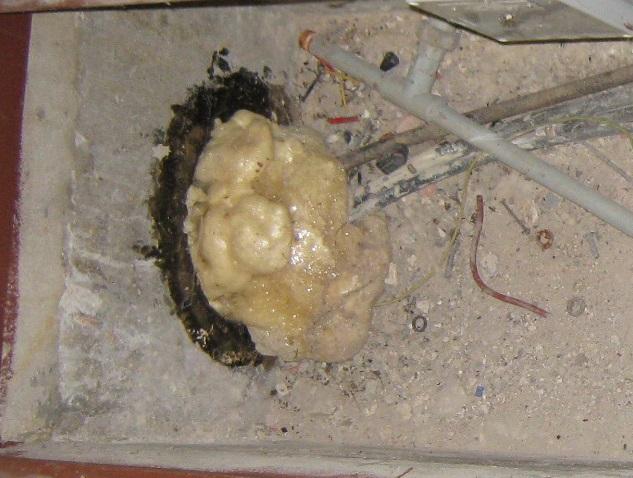
MD5 Duct Sealing System Vs DIY Expanding Foam
The use of expanding foam in construction & mainatenance projects in all industries has increased over time, but it faces major problems when applied wrong, or designed into a project where the foam specs doesnt match the requirements of the project. In this BLOG, we'll cover the reasons why expanding foam fails when sealing cable ducts and what you can do about it.
The expansion of polyurethane foam (PU) as a construction material has increased the use and versatility of this product. PU can be used in walls, roofs, ceilings, floors and more to provide insulation and structural support. The engineering challenges inherent in designing with PU have been overcome by technological advances that allow for low-density foam products that are easy to install on-site.
The expanding foam is an ok product for sealing small gaps, filling voids and cracks, and insulating. That's it, nothing more. It's also used as an adhesive to attach insulation on walls or ceilings and sealing cable ducts. However, most expanding foams are made of poor quality polyurethane, not providing the needed properties for a sealant or adhesive.
We'll start with some information about polyurethane DIY foam comparing to our MD5 Duct sealing Resin.
You can see clearly our resin is far superior, and the reason why DIY foams fail over time.
|
Properties |
Generic expanding foam from DIY stores |
|
| Cell Structure | Large, weak soft foam - 70% closed | 100% closed, small, strong & durable |
| Expansion Rate | 35 x can volume - Very quick & uncontrolled | 8 x volume - slow & easy to control |
| Temperature resistance | +194°F / +90°C | +248°F / +120°C |
| Compressive Strength | 3 Newton /cm2 / 0.67 pounds of force | 60 Newtons / 14 pounds of force |
| Resistance to Hydrocarbons | No | Yes |
| Water Resistant | Yes - temporarally | Yes, permanently - upto 1.5 bar / 21 psi |
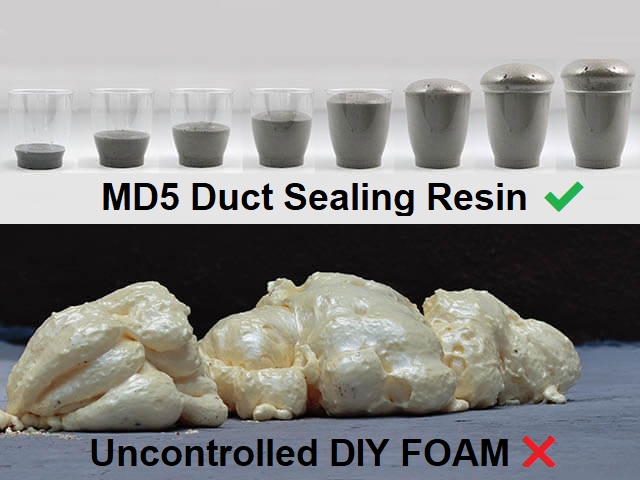
Important
If you're looking to seal your ducts, we strongly recommend that you hire a professional. If not, you should never use DIY expanding foam like what's shown in the image below because it is messy and can create more problems than it solves. However, if you have any questions about which type of sealing system might be best for your particular project or specific requirements - contact one of our experts today! Call 01189 886873 or email info@filoform.co.uk . We'll eagerly provide all the information and assistance necessary to ensure that your needs are met on time and hopefully within budget. ⬇️⬇️⬇️⬇️
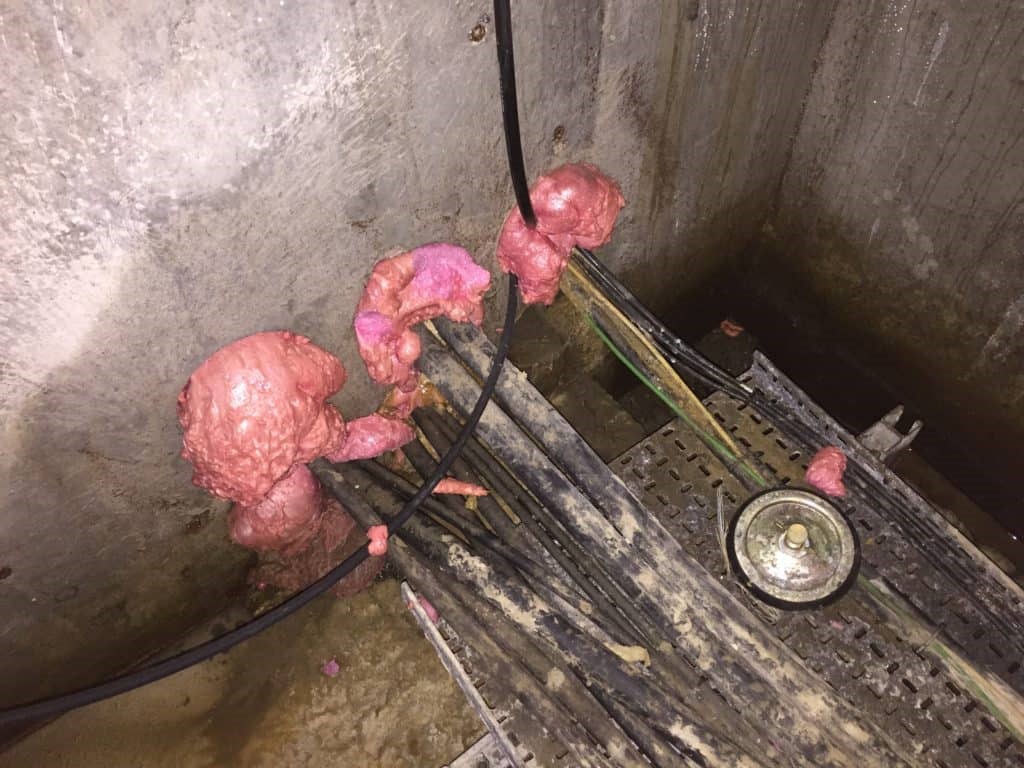
Key points to remember about DIY expanding foam
Try not to use them at all. That’s it.
Seriously, If you need to seal a cable duct....please continue to read.
How to Select a Duct Sealing Solution
It is critical to evaluate the specific duct sealing situation and identify the objectives of the seal. For Example:
- Are there cables in the duct? How many?
- Does water need to be blocked? How much water?
- Is a fire stop needed? Please check out our fire resistant duct sealing system, called FiloSeal+HD Fire
- Does the conduit enter a building?
- Are gases or chemicals a concern?
Selection should be at the design stage, where the seal requirements can be matched to the overall project. Typically, a design specification will require water, gas and perhaps fire resistance together with specific chemical resistance. The life of the seal needed should also be considered. Every seal manufacturer should be able to provide proof of expected life. Over-engineering the seal design should also be avoided. A duct sealing solution that meets the specific needs of the application is the right solution.




Keys to an effective Seal
✅Training and preparation - First, read and follow the manufacturer's instructions. Like any other job a field mechanic performs, it requires knowledge and skill. Duct sealing solutions should be engineered into the job and training completed in advance of the fieldwork.
✅Sealing system selection - Most underground duct sealing systems will need to block water and gases and tolerate hydrocarbons. If the duct enters a building, a fire stop may be required. Select a sealing system that addresses the risks present.
✅Cable separation - This is the area where most duct seals will fail; either the product doesn't support cable separation, or the installer has been unable to separate the cables sufficiently. Without separation, water and gases will simply wick through areas without the sealant.
✅Conduit Sealing: Our range of conduit sealing systems have been designed to provide a simple and effective solution for watertight and gas sealing of pipes and cables in conduits, boreholes and ducts. Conduit sealing systems can be installed horizontally and vertically; they are extremely flexible.
Words of wisdom from our Duct Sealing specialist, Steve Groocock, sharing his thoughts and expericance with DIY expanding foams.
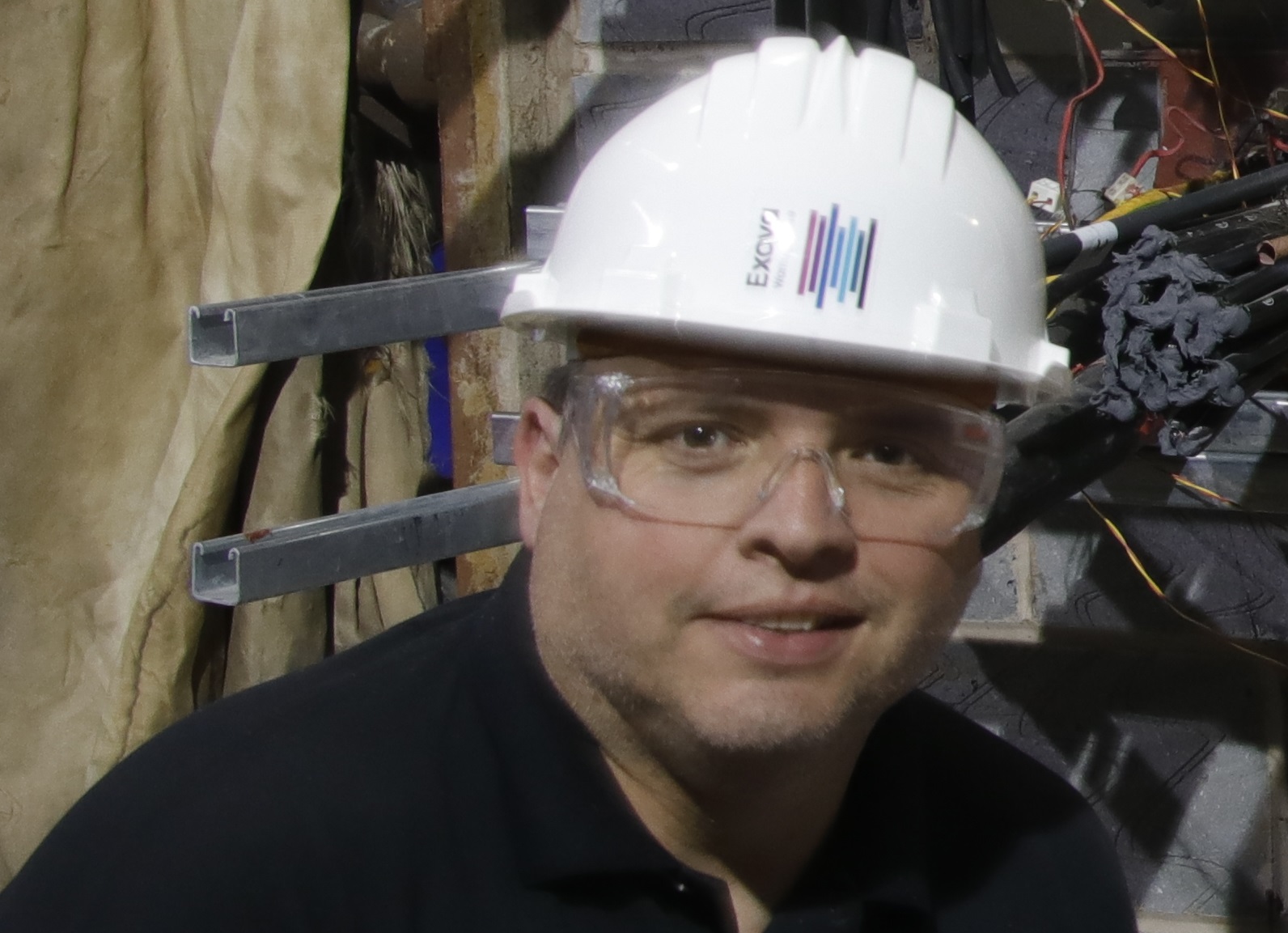
![]() Expanding foam – why I don’t rate it as a duct seal.
Expanding foam – why I don’t rate it as a duct seal.
One way or another I have been involved in sealing ducts since 2001.
All duct sealing systems chosen have their strengths and weaknesses bar one. DIY expanding foam is inexplicably popular as a duct sealing solution. This is despite the fact that any duct sealed with it looks like it has some sort of malignent growth coming from it.
I can only assume this is because:
1, It is cheap.
2, It requires no skill to apply
3, It’s quick to ‘seal’ a duct with it………..
4, It might work to hold back water just long enough for the contractor who applied it to get off site and get paid.
This foam was never intended to seal ducts but yet I see it everywhere I am called into because the ducts are leaking! What is worse, it is a devil of a job to remove adequately in order to apply a proper engineered duct seal system. Hours can be spent cleaning down a single duct that was ‘sealed’ with DIY expanding foam!
There are two types of foam I see out and about, a general yellow one for construction plus a fire retardant pink one. Neither one can seal a duct properly
Some industries write into the their specifications that DIY expanding foam cannot be used and these industries should be applauded for taking a stance against the poor results you get with it. Industries I know of who have explicitly banned DIY foam are the water industry (the major water companies of the UK and their contractors and sub contractors) and the petrol filling station industry. The latter is a good call as DIY expanding foam has virtually no chemical resistance to anything and actually dissolves in petrol!
Many sites I attend have been ‘sealed’ at the last minute using this foam because of its speed. Speed should not be the primary consideration when choosing a duct seal. However, duct sealing is usually one of the last stages of a major project so I perhaps understand why a poor choice is made to go with DIY expanding foam.
This quick choice now leads to nightmare maintenance and leak monitoring issues long terms which ends up costing far more than a proper duct seal system upfront would have cost.
You should not, however, confuse this DIY expanding resin with the offering Filoform make with the MD5 system. Filoform have been sealing ducts for years and are based in a country famously below sea level, so where better to get a seal from? The Filoform MD5 has a far superior foam cell structure capable of holding back water under pressure as well as resisting chemicals.
In summary, if in doubt about your duct seal needs, check the project specifications and if needed, call in some duct seal experts to help you!![]()
Some of the DIY foam horror installations we've seen. There are so many more out there. If you have some examples, please email them us, info@filoform.co.uk
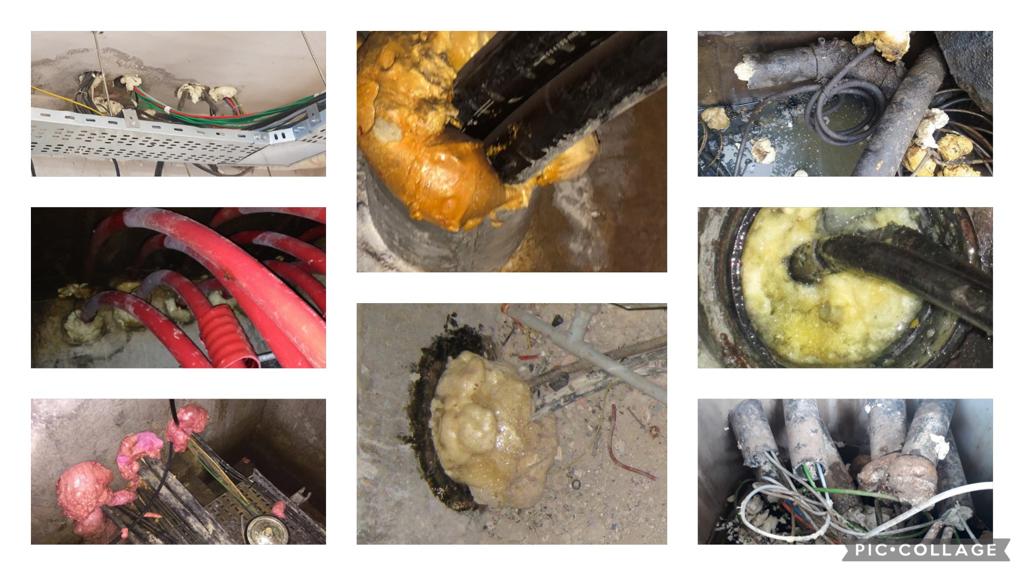
Introducing The MD5 duct Sealing System that is effective, quick & easy to install, and affordable.

Installation
✅One box solution
Everything needed to seal one duct end (except a caulking gun).
✅Cable Separation
It is vital, to make sure the duplex foam is wrapped around each cable, to create separation from each other and the inside of the duct.
Running water
The duct & cables must be as dry as possible with no running water and free from any dirt, oil, greese & debris. MD5’s resin can cope with small amounts of moisture in the duct or on the cables, but larger amounts of water will reduce the effectiveness. Please contact our technical department if you have any questions.
Cure time
MD5’s resin can be installed in temperatures from 5°C (41°F). In colder temperatures, expansion can be slower but will expand and cure over a more extended time. Expansion time between 8-10 minutes at temperature ranging between 15-20°C.
Cleaning
Should any un-mixed material spill onto a surface, a solvent wipe can be used to help clean the area.
Reentering & removal
Properties of Cured resin: Fairley dense structure however can be dug out with a blunt tool & Hammer with some degree of difficulty.(Please note there is between 10-15 cm (4-6”) of the expanding resin in each seal depending on the size of duct)
• Remove all of the front foam that is separating the cables with a pair of pliers or cutting tool
• Using a hammer & chisel or similar tool to break the seal around the cable and the inside of the duct
• If there is room and the cables are de-energized, a power tool to speed the process up could be used. Once the seal is broken from the cable, there may be a crust of resin still present on the cable; this is due to the excellent adhesion our resin has. The hardest part of removing this seal is the crust that forms when the resin soaks into the foam flange.
Safety
MD5’s specially formulated two-component resin is part of the same chemical/product family of similar electrical and construction industry products. These products have been widely used for decades. As with all two-component resins safety precautions must be understood to handle and install these types of materials. MD5’s resin is contained in a state of the art 2K cartridge, which reduces contact with the raw materials. When the two components are mixed, the resin expands and forms a high density, closed-cell polyurethane foam and is inert and non-toxic when fully cured.
Storage conditions
The cartridges should be kept in a cool, dry environment and away from direct sunlight. Product shelf life is 18 months, and providing the cap is correctly inserted after use, then remaining product in the cartridge can be used within two months of opening.
Specifications & Standards
✅ Gas and watertight up to 1.5 bar / 21 PSI
✅ After injecting, the polyurethane sealant will expand and cures/hardens with a high density and a closed cell structure
✅ Easy and quick installation
✅ One complete kit - Everything you need except for a standard caulking gun
✅ Suitable for single & multiple cables
✅ Compatible with a wide range of cable and conduit materials: PVC & PEsheathed cables, PILC cables, (HD)PE ducts, & PE drinking water conduits • High mechanical strength, resists ground movement, shocks and vibrations
✅ Complies with DIN 18322 underground cable laying works - gas & watertight cable and conduit entries into buildings • Complies with 2011 NEC Articles 225.27, 230.8, 300.5(G), 300.7 (A) on Raceway Seals, and 501.15 (B)(2)
Are you not convinced yet to use our MD5 Duct Sealing system instead of DIY Expanding PU foam from a can? If not, please read the test data below, performed by ourselves. You won't find a single manufacturer of expanding foams in a can with the same test data for sealing cables in a duct.
| OVERVIEW OF ALL TESTS | |||
| Functional tests | Unit | MD5 - 110mm | MD5 - 160mm |
| Gas & Water Tight - 1.0 bar | 30 Days | PASS | PASS |
| Gas & Water Tight - 2.5 bar | 7 Days | PASS | PASS |
| Aixile tensile force (pull out strenth cable) | Diameter mm x 10N (100mm//min) | > 1500 Newtons | > 2000 Newtons |
| Resistance to bending | Cables 45° in two directions > 250mm no leakage | PASS | PASS |
| Operating Temperature, continious..... | Degress °C | -30 up to 100 | |
| Operating Temperature, peak | Degrees °C | -40 up to 120 | |
| Application Temperature | Degrees °C | +5 up to 35 | |
| AXIAL TENSILE FORCE - CABLES BEING PULLED FROM THE SEAL | |||||
| Duct Size | Duct Material | Cable O/D | Cable Sheath | Cable Spec | Result |
| 110mm | PVC | 32mm | HDPE - Black | NA2XS2Y | 2334 Newtons |
| 110mm | PVC | 26mm | HDPE - Red | BFK 1 x70RM | 1710 Newtons |
| 110mm | PVC | 38mm | PVC - Grey | V-VMkvKhsas | 3341 Newtons |
| 160mm | PVC | 27mm | HDPE - Red | BS 7870-4.10 | 2751 Newtons |
| 160mm | PVC | 32mm | HDPE - Black | NA2XS2Y | 2818 Newtons |
| 160mm | PVC | 29mm | HDPE - Black | N/A | 3120 Newtons |
| 160mm | PVC | 53mm | PVC - Grey | V-VMvKhsas | 2912 Newtons |
| BENDING TESTS WITH GAS & WATER PRESSURE AFTER | |||||
| Duct Size | Duct Material | Cable O/D | Cable Sheath | Cable Spec | Result |
| 110mm | PVC | 38mm | PVC -Grey | V-VMvKhsas | PASS |
| 110mm | PVC | 37mm | HDPE - Red | N/A | PASS |
| 160mm | PVC | 38mm | PVC - Grey | V-VMvKhsas | PASS |
| 160mm | PVC | 37mm | HDPE - Red | N/A | PASS |
| GAS TIGHTNESS TESTS | |||||||
| Duct Size | Duct Material | Cable O/D | Cable Sheath | Cable Spec | Nr of Cables | 30 Days - 1.0 Bar | 7 Days - 2.5 Bar |
| 110mm | PVC | 32mm | HDPE - Black | NA2XS2Y | 3 | PASS | PASS |
| 110mm | PVC | 26mm | HDPE - Red | BFK 1 x70RM | 3 | PASS | PASS |
| 110mm | PVC | 38mm | PVC - Grey | V-VMkvKhsas | 1 | PASS | PASS |
| 160mm | PVC | 27mm | HDPE - Red | BS 7870-4.10 | 3 | PASS | PASS |
| 160mm | PVC | 32mm | HDPE - Black | NA2XS2Y | 3 | PASS | PASS |
| 160mm | PVC | 29mm | HDPE - Black | N/A | 3 | PASS | PASS |
| 160mm | PVC | 53mm | PVC - Grey | V-VMvKhsas | 1 | PASS | PASS |
 United Kingdom
United Kingdom  Español
Español  Français
Français  Netherlands
Netherlands  English
English  Deutsch
Deutsch 
